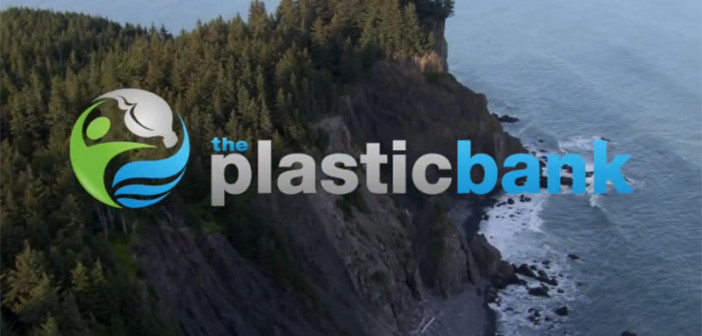Alongside the increasing accessibility of 3D printing there are questions about the sourcing and disposal of 3D printing filament plastics and the long-term environmental effects of an increased production of plastic items.
In order to tackle these big questions Shaun Frankson, Vice President of The Plastic Bank, and his team are pressing into innovations that will not only help the environment, but could help people in poverty as well.
Currency for Developing Countries
The Plastic Bank is designed to work in developing countries where there is an abundance of plastic waste and a need for increased incomes and entrepreneurial possibilities. By collecting plastic and turning it into useful items through 3D printing, plastic becomes currency to lift people out of poverty and provide them with opportunity.

The goal for The Plastic Bank is to have facilities that will collect plastics, produce 3D printing filaments from those plastics and 3D print valuable objects all in one spot.
Eventually, the organization hopes to make recycled 3D printing filament accessible for purchase by makers everywhere so any 3D project could be part of global plastic clean-up.
3D Printing Recycled Plastics Onsite
Onsite 3D printing capabilities in developing nations would bring access to vital objects that would otherwise be unobtainable – like simple parts to machinery – as well as increase access to 3D printed objects that could create new income streams through entrepreneurial business opportunities.
The Plastic Bank is working with designers and crowd-sourcing in order to identify 3D printed poverty solutions which would eliminate supply chain problems and result in totally accessible, onsite manufacturing at The Plastic Bank locations.
They are also currently exploring which 3D printers are best for the different types of plastics that would be recycled and which solutions will be most accessible on a global market. The first operational The Plastic Bank location is set to open in Lima, Peru this summer.
The World’s First 3D Printed Item from Recycled Ocean Plastic
In addition to starting The Plastic Bank in impoverished areas the organization has just created the world’s first 3D printed items from ocean plastic removed from shorelines in Alaska and British Columbia.
The collected plastic was sorted and recycled into pellets and, using an open source extruder created in partnership with the University of British Columbia, the recycled pellets and resin were turned into filament that was used to 3D print the first ever 3D printed item from ocean plastics.
Creating a Social Plastic Movement
Listen to this podcast from BotNexus.com with Shaun Frankson for more details on the project, information about how 3D printer makers can get involved and where they are headed with the social plastic movement.
With the potential of using recycled plastics for manufacturing available, The Plastic Bank is working on raising awareness and getting consumers to join in the demand for recycled plastics. Currently, their Facebook page “I Demand Corporation Use Recycled Ocean/Social Plastics” has nearly 44,000 supporters.




